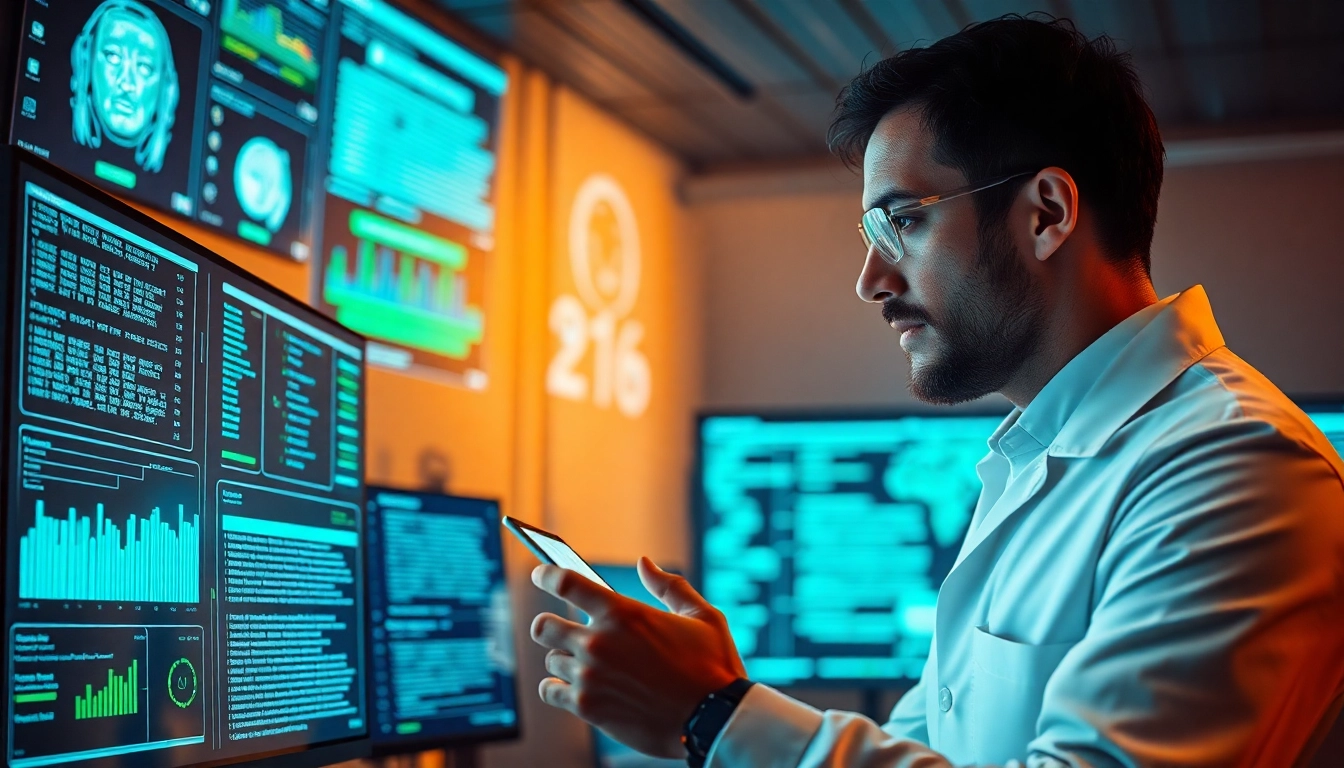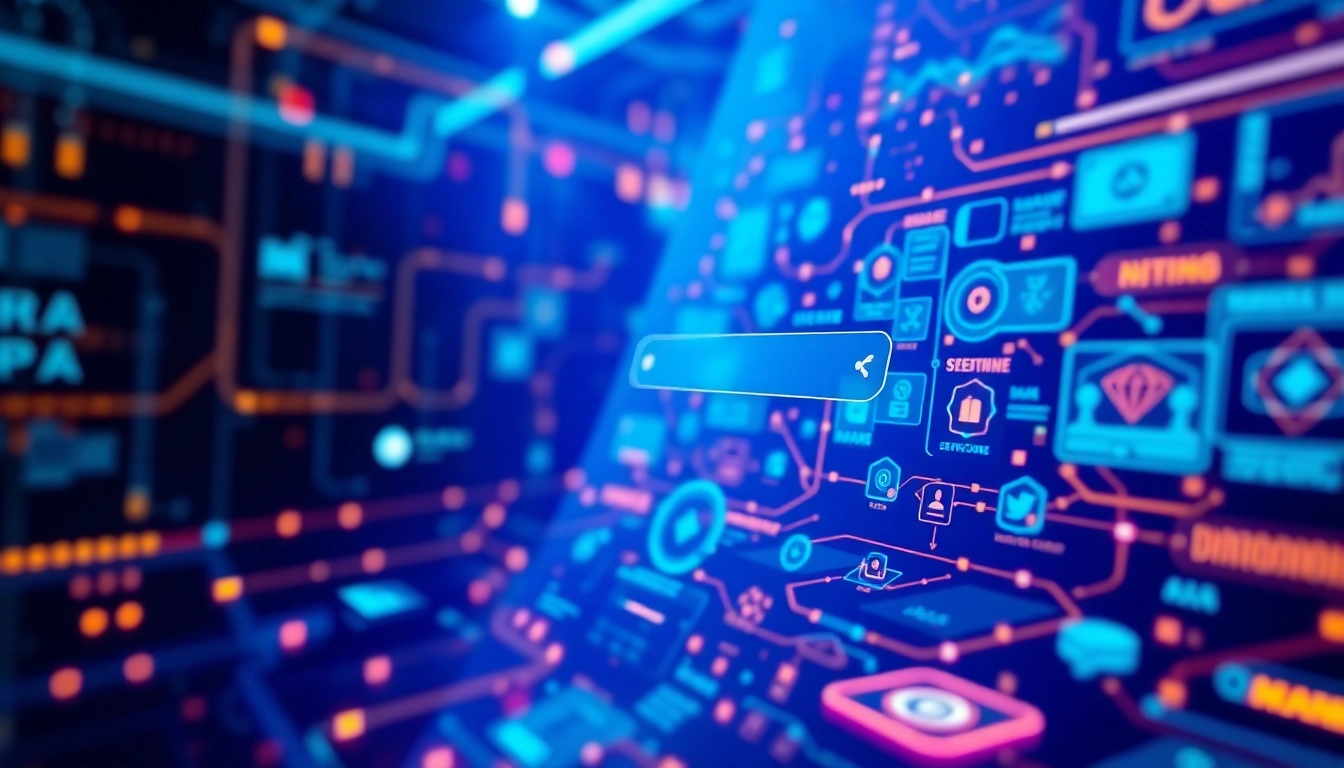Introduction to AI Detection
In recent years, the advancement of artificial intelligence (AI) technologies has invariably altered industries, creating vast applications from automating customer service to generating high-quality content. However, as AI capabilities expand, so does the necessity to differentiate between human-generated and AI-generated content. This critical requirement is where ai detection comes into play. Understanding the intricacies of AI detection not only drives better practices in various sectors but also helps maintain the integrity and originality of content.
What is AI Detection?
AI detection refers to the mechanisms and processes employed to identify whether a piece of visible content—like text, images, or even audio—has been generated by an AI system or crafted by a human. This detection often relies on advanced algorithms and data patterns to analyze characteristics intrinsic to AI outputs. Such features include syntactical construction, semantic patterns, and handwriting styles that distinguish AI-generated content from that authored by humans.
Importance of AI Detection in Various Industries
The role of AI detection is evolving into a pivotal component across multiple sectors, including education, journalism, marketing, and data governance. For instance, in educational settings, institutions must ensure the authenticity of student submissions to uphold academic integrity. In journalism, distinguishing between sources and maintaining credibility is crucial as AI-assisted writing proliferates.
Moreover, businesses leveraging AI for creating marketing content need reliable detection tools for assessing the originality and efficacy of their communications. As we continue navigating through this digital landscape, employing ai detection tools helps organizations manage risks associated with misinformation, plagiarism, and content quality.
Overview of Cutting-edge Technologies Used
AI detection technologies utilize a myriad of methodologies. Some of the cutting-edge advancements include:
- Machine Learning Algorithms: These algorithms train on identifying linguistic features and patterns common in AI-generated content.
- Natural Language Processing (NLP): NLP techniques analyze syntax and semantics to understand the context and structure of text, aiding in distinguishing between AI and human writing.
- Deep Learning: Deep neural networks analyze vast amounts of data for intricate patterns, improving the accuracy of detection tools over time.
Collectively, these technologies propel the efficacy of ai detection tools, ensuring organizations can make informed decisions based on the authenticity of their content.
How AI Detection Works
Key Methodologies and Algorithms
Understanding how ai detection works requires delving into the methodologies and algorithms that power it. Predominantly, detection tools apply a variety of methods combined into a robust framework, including:
- Statistical Anomaly Detection: This technique identifies outliers in textual data that deviate from normal human writing patterns, flagging potential AI-generated content.
- Feature Extraction: AI detectors often analyze specific features common in AI-generated material, such as word frequency, sentence length, and punctuation usage.
- Regression Analysis: Some systems rely on regression models trained on extensive datasets of human versus AI text to assess the likelihood of a piece being AI-generated.
By leveraging these methods, ai detection tools can determine the origin of text with considerable precision.
Understanding the Accuracy and Limitations
While advancements in ai detection technologies yield improved accuracy, it’s essential to acknowledge their limitations. Accuracy can vary based on factors such as:
- The quality and volume of training data used to develop detection models.
- Subtlety in presentation of AI-generated and human content that may confound detection methods.
- Evolution of AI models, as newer generations of AI can produce text that mimics human writing styles more convincingly.
Additionally, continuous refinements and updates in AI technology necessitate regular recalibration of detection models to maintain relevance and efficiency.
Comparative Analysis of Different Detection Techniques
Several detection techniques exist, each with its pros and cons. Techniques such as rule-based detection rely heavily on predefined rules to identify patterns, which can sometimes lead to missed detections. Conversely, machine learning-based detection offers a data-driven approach that adapitates as it is trained on larger datasets.
For instance, while statistical detection excels in identifying straightforward content generation from older models, advanced deep learning techniques prove more effective against contemporary AI. Companies should choose a detection technique that aligns with their operational requirements and desired accuracy.
Evaluating AI Detection Tools
Criteria for Selecting an AI Detection Tool
Choosing the right ai detection tool is vital for ensuring effective monitoring of content authenticity. When selecting a tool, organizations should consider the following criteria:
- Accuracy: Evaluate the tool’s precision in identifying AI-generated content, focusing on its reported accuracy levels from credible sources.
- User-Friendliness: A good detection tool should have an intuitive interface allowing for seamless user experiences, minimizing the learning curve.
- Integration: Ability to integrate with existing workflows or platforms is crucial for maximizing efficiency and leveraging existing technologies.
- Scalability: As business needs evolve, the chosen tool must accommodate growing demands without sacrificing performance.
Features to Look for in AI Detectors
When exploring various ai detection tools, organizations should look for specific features that contribute to a comprehensive detection capability:
- Multi-Language Support: Many detection tools should support multiple languages to cater to diverse global audiences.
- Real-Time Analysis: Instant detection capabilities empower users to quickly verify content, thereby facilitating timely decision-making.
- Detailed Reporting: A robust analysis report detailing areas of concern, detection confidence scores, and suggestions for improvement can enhance understanding.
- Customizable Parameters: Having the ability to modify detection criteria ensures the tool aligns with specific organizational requirements.
Popular Tools and Their Functionalities
While specific brands are not mentioned here, it’s essential to recognize that various detection tools provide unique functionalities to cater to differing needs. Some tools offer cutting-edge machine learning technologies, while others focus on user accessibility and straightforward integration capabilities. When assessing various tools, organizations should prioritize functionalities that align best with their operational goals and the contexts in which they operate.
Implementing AI Detection in Workflow
Steps for Integrating AI Detection
The integration of ai detection tools into existing workflows involves several strategic steps to ensure maximum efficiency:
- Assessment of Needs: Conduct a complete evaluation of organizational needs to determine specific content types requiring detection.
- Tool Evaluation: Based on defined needs, assess available detection tools and select the one that fits best.
- Training & Onboarding: Organize training sessions for staff to familiarize them with the tool’s functionalities and ensure they are equipped to leverage it effectively.
- Implementation: Deploy the tool within current workflows, adjusting processes as required and ensuring smooth transitions.
- Continuous Monitoring: Regularly review the tool’s effectiveness and make adjustments based on performance feedback and evolving content strategies.
Challenges in Implementation and Solutions
While implementing ai detection tools can lead to significant benefits, various challenges may arise:
- Resistance to Change: Staff may be hesitant to adopt new systems; ongoing training and clear communication of the value proposition can help address this resistance.
- Technical Difficulties: Technical challenges can be mitigated through thorough testing in pilot phases before full-scale implementation, allowing teams to troubleshoot issues that may arise.
- Budget Constraints: Organizations might face budget limitations. Carefully evaluating available resources and opting for tools that provide free trial periods can help find the best fit without overspending.
Training Staff for Effective Usage
Training is crucial in successfully leveraging ai detection within organizations. Key components of effective training programs include:
- Workshops & Webinars: Offer educational sessions focusing on the tool’s capabilities and the significance of content authenticity.
- Hands-On Practice: Engage staff in practical exercises using real case studies, allowing them to apply their knowledge in realistic scenarios.
- Feedback Mechanisms: Establish systems to gather feedback from users to continually improve training efforts and tool effectiveness.
The Future of AI Detection
Emerging Trends and Technologies
As technology continually evolves, the future of ai detection will likely be shaped by several key trends:
- Increased Use of AI in Detection Tools: Tools will likely leverage AI to enhance their detection methodologies, allowing for greater accuracy and adaptability.
- Real-Time Content Monitoring: Future advancements may enable real-time monitoring of various content platforms, providing immediate detection and corrections.
- Enhanced User Customization: Expect more tools to offer customization options tailored to the specific needs of various industries.
Potential Impacts on Content Integrity
The rise of accurate detection will likely bolster content integrity across industries. Organizations that adopt ai detection tools will better manage risks related to misinformation and uphold industry standards. This shift will assist in establishing trust and transparency with consumers who demand credible information.
Best Practices for Staying Ahead in AI Detection
As the landscape of AI detection continues to evolve, organizations should adopt specific best practices to stay ahead:
- Regularly Update Detection Tools: Ensure that the latest versions of detection tools are used to remain effective against evolving AI technologies.
- Develop an Ethical Framework: Create guidelines outlining the ethical use of AI and the implications of its detection on content integrity.
- Foster a Culture of Awareness: Promote continuous education and awareness about the significance of authenticity in content among all staff members.
In conclusion, as AI technologies further permeate industries, the role of effective ai detection will become paramount. Organizations which proactively adopt best practices, invest in suitable tools, and ensure staff training will be better positioned to navigate this new landscape of content creation and consumption.



